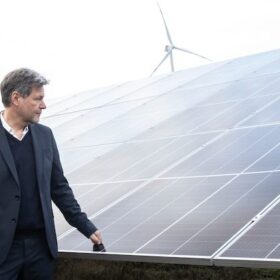The Hydrogen Stream: German government adopts import strategy to create investment security
A new hydrogen import strategy is expected to make Germany better prepared for increasing demand in the medium and long term. The Netherlands, meanwhile, saw its hydrogen market grow considerably across supply and demand between October and April.
SSE Renewables plans 37 GWh pumped storage project in Scotland
As the UK awaits the outcome of the proposed Cap & Floor mechanism for long duration storage project, the pipeline of proposed pumped hydro storage projects is progressively growing.
The Hydrogen Stream: New way to make hydrogen, fertilizer from ammonia
German researchers have developed a new way to liberate hydrogen from ammonia, while a new MIT study shows the need for stringent emissions regulations on ammonia combustion for maritime mobility.
The Hydrogen Stream: Europe could miss 2030 hydrogen targets
The European Court of Auditors says the European Union will likely fail to achieve its 2030 renewable hydrogen goals, while the US Department of Energy and Arches have agreed to build a $12.6 billion hydrogen hub in California.
Sunswap rolling out PV-powered transport refrigeration
The U.K.-based technology company has launched Endurance, an electric transport refrigeration system with integrated battery and solar PV. It is built to compete with diesel-powered systems.
New UK government signals strong support for solar
Signs of a UK government that’s prepared to back solar have emerged within a fortnight of the Labour Party securing victory in the General Election. The government has already signed off on more than 1 GW of new solar capacity.
The Hydrogen Stream: Germany grants €4.6 billion to 23 green H2 projects
The German government has granted €4.6 billion ($5 billion) for 23 green hydrogen projects, while BP has revealed separate plans to develop a 100 MW green hydrogen installation in Germany.
UK energy retailers add heat pump tariffs
Time-of-use and type-of-use tariffs for heat pump customers launched to support technology adoption in market where gas heating remains competitive on price.
Naked Energy secures GBP 17 million of new equity
Naked Energy has obtained GBP 17 million ($22 million) in new equity. The UK-based photovoltaic-thermal (PVT) system supplier says the investment, led by E.ON and supported by Barclays, will help “supercharge its global expansion.”
The Hydrogen Stream: Poland unveils hydrogen strategy
The Polish government has outlined its main objectives for the development of hydrogen, while Tyczka Hydrogen says a damaged compressor from Maximator Hydrogen caused a recent incident at one of its filling stations in Germany.








